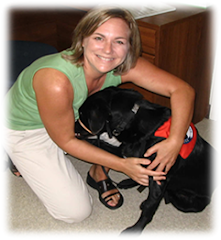
Visual Sequential Memory is a perceptual skill that allows you to remember the order or sequence of items you see. For example, remembering the order of letters in a word or the order of words in a sentence. Children with visual sequential memory difficulties will experience difficulty copying from the board, learning to read, & remembering what they have read. Spelling is often difficult for this child, as are developing simple sentences. If a child can't remember the sequence of letters/words, these tasks are almost impossible to complete without assistance. Children with dyslexia often have difficulty with this visual sequential memory.
This young man is Gary. For the last year, we have focused a lot on his handwriting, as this is an area he needs significant work. His overall performance is definitely affected by visual perceptual deficits, visual motor integration difficulties, and motor in-coordination. We have worked specifically on copying sentences and words for many reasons. Besides having difficulty with visual sequential memory, he also has difficulty with spatial awareness, letter formation, and letter identification. Until this last year, he could not write letters from dictation, nor could he accurately spell his last name. His overall digit span (how many digits he can remember when asked) is 3-4 letters, and this is not always consistent.
In this activity, we are working specifically on visual sequential memory. The goal of the activity is for Gary to remember the order in which Chief touches the colored spots on the floor. Just below the spots you will see an index card. On the first index cards, we wrote letters and had Gary write the letters he remembered in the order in which Chief touched them. We advanced this activity to words, and Gary was then expected to write the words in sequential order to form simple 4-5 word sentences.
What was not addressed specifically in this activity was spatial awareness. Typically, Gary needs cues from me (pointing to each word/letter on the sentences he is copying) to guide his awareness of spacing. Most sessions, I have to point at each letter to help him visually track his place and follow his eyes across the line of text. However, in this activity, Gary did not need this cuing. He was able to use the visual spacing between the dots/words on the floor as his cues for spacing. In fact, he needed no prompts at all for spacing (a first for Gary!!). The dots provided enough of a visual cue for him. Even with the words scrambled on the floor in no particular order, Gary was able to remember the order in which Chief touched the dots to write sentences. Lastly, the paper that I usually have Gary copy sentences from is typically placed directly above his writing paper. As you will see, in this activity, Gary has to look to his right at Chief to copy words, much like he would be expected to copy from a chalkboard in a classroom. This is also a large improvement for Gary.
We've done this activity with 2 kids now of different ages with visual sequential memory difficulties with excellent results.
Chief, great job with the foot targets, Buddy!!!













